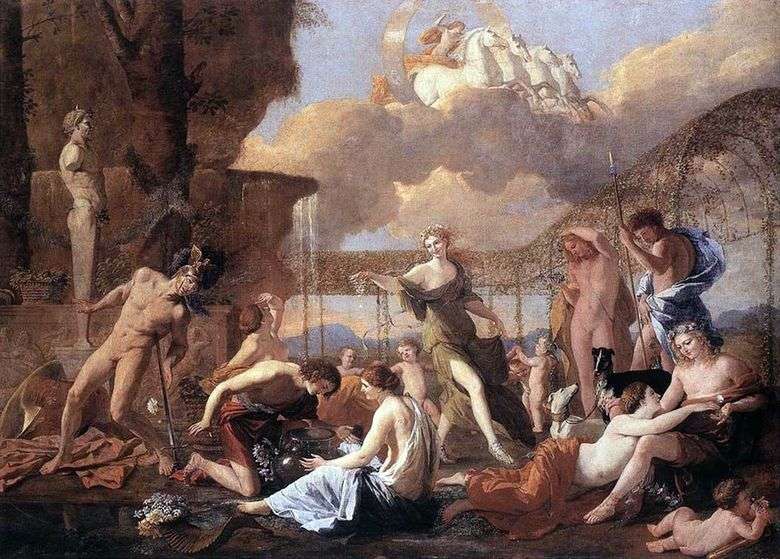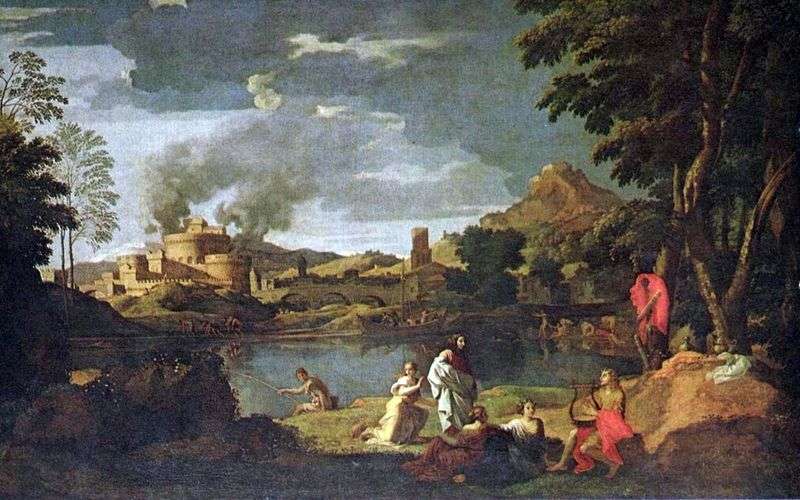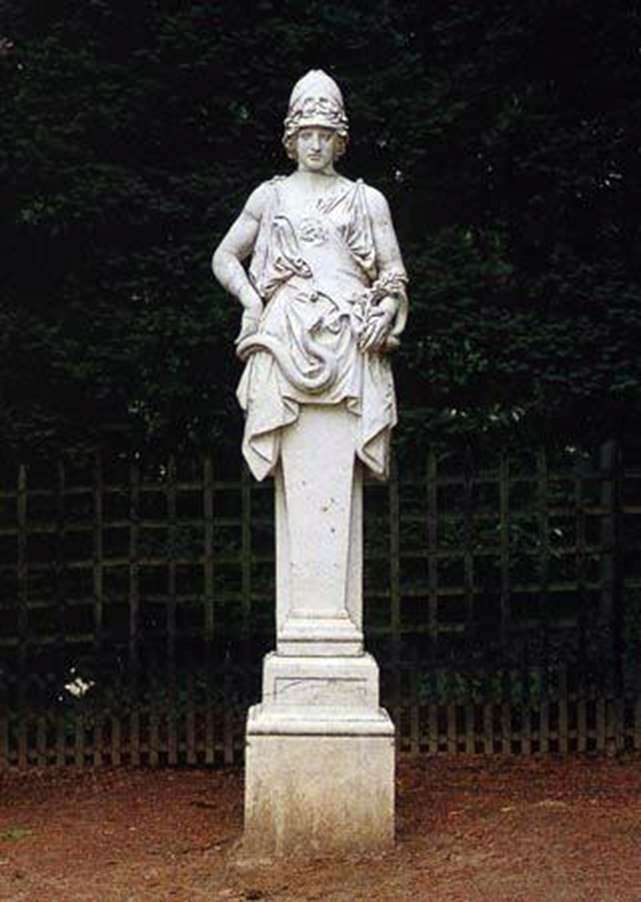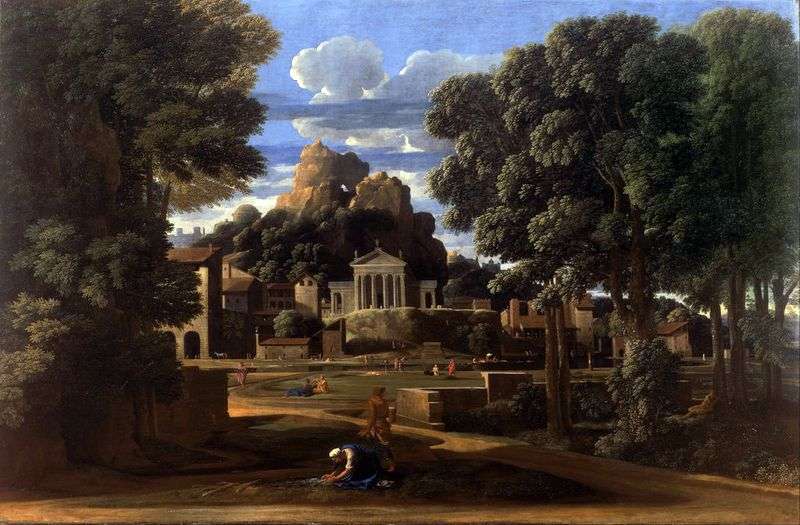
Poussin’s painting presents to us three divine powers that governed in the ancient world eternal cycles of birth and death, reincarnation and resurrection, this is his mystical interpretation of pagan orgy in praise of Priapus or Bacchus – the god of fertility, to whom the altar depicted in the picture is dedicated.
The goddess of flowers and spring Flora, who frantically dances in her “sacred garden” – that is, in the afterlife, where mad heroes and victims of cruel gods have found a second life in the form of plants, is in charge of the bacchanal. On the left – King Ajax, who lost his mind by the will of Athena and pierced himself with a sword. Next – kneeling Narcissus admires his reflection, behind him – Cleetus, cursed by the god Apollo: by the will of the sun god she turned into a sunflower, constantly turning its petals after its beloved god.
On the right in the foreground are the beloveds – the young man Crocus and the girl of Smilak, who was reborn into a bindweed. Behind them – Adonis with dogs, Aphrodite’s companion, who was tore to death by a wild boar, but anemones bloomed from his blood. Next to him stands Hyacinth, the favorite of Apollo, touching the mortal wound on his head, accidentally caused to him by the sun god, admires the flowers, into which he will then be turned by his patron. Finally, Vladyka Apollo himself is depicted in the sky, punishing and forgiving, controlling not only the quadriga of horses, but also all the other Roman gods.
Interestingly, this alchemist Fabrizio Valguarner, known at that time, ordered this artist with such a specific plot. But the picture did not get to the customer: while Poussin was working on the order, Valguaneru was arrested on charges of stealing diamonds from noble Spanish persons. And soon Valguarner died in prison, and the painting “The Kingdom of Flora” was sold at auction. “
The chariot of Apollo among the signs of the zodiac, a fragment of Poussin’s painting “The Kingdom of Flora”.
“The Kingdom of Flora” – one of the most mysterious paintings in the works of Poussin. Indicative is the fact that during the trial in the documents, which featured the Dresden canvas, Valguarner called the painting “Spring”, and Poussin himself – “Garden of Flowers”. The artist did not follow a strictly literary source, creating a pictorial “poem”, interpreting the myth in a new way.
For the first time, the painter turned to the theme of the garden of flowers around 1626. The preparatory drawing for the painting “The Kingdom of Flora” has survived, where the French master outlined all the main elements of the composition of the future canvas. “
 El reino de la flora – Nicolas Poussin
El reino de la flora – Nicolas Poussin Apollo and the Muses (Parnassus) by Nicolas Poussin
Apollo and the Muses (Parnassus) by Nicolas Poussin Apollo and Daphne by Nicolas Poussin
Apollo and Daphne by Nicolas Poussin Death of Germanicus by Nicolas Poussin
Death of Germanicus by Nicolas Poussin Orpheus and Eurydice by Nicolas Poussin
Orpheus and Eurydice by Nicolas Poussin Arcadian Shepherds by Nicolas Poussin
Arcadian Shepherds by Nicolas Poussin Minerva by Nicolas Poussin
Minerva by Nicolas Poussin Fokion’s Ashes by Nicolas Poussin
Fokion’s Ashes by Nicolas Poussin